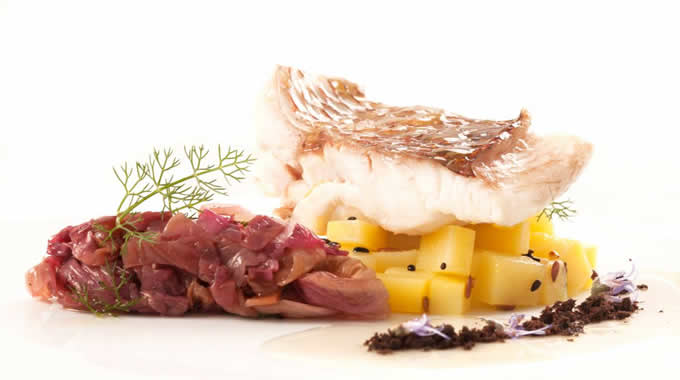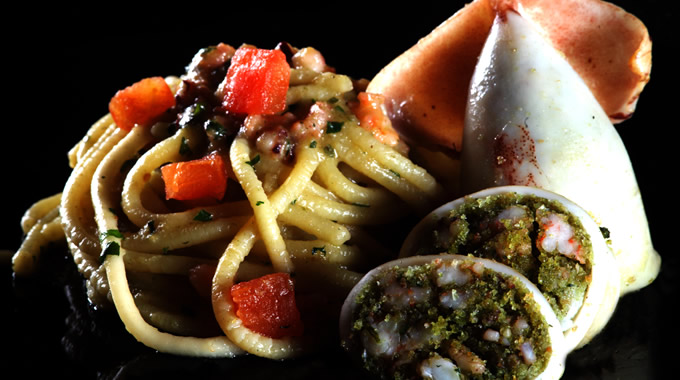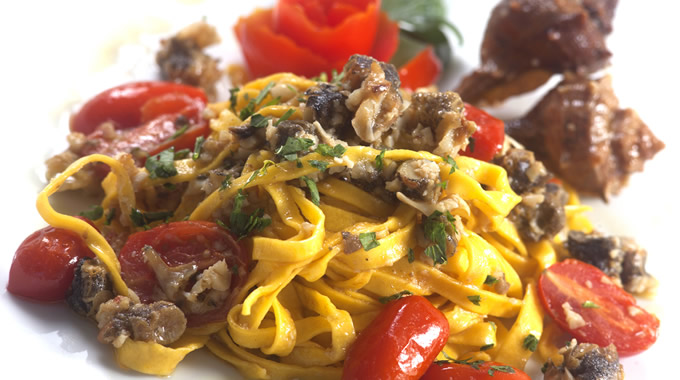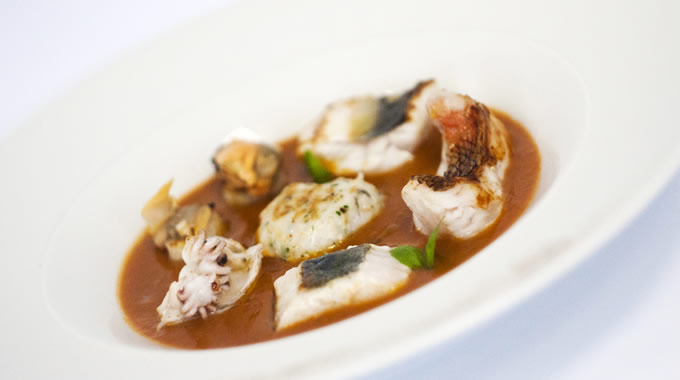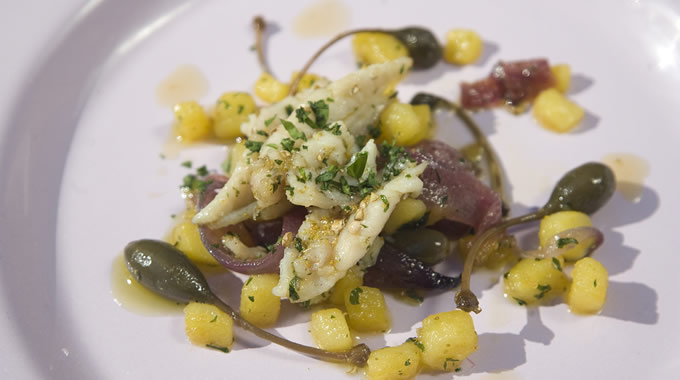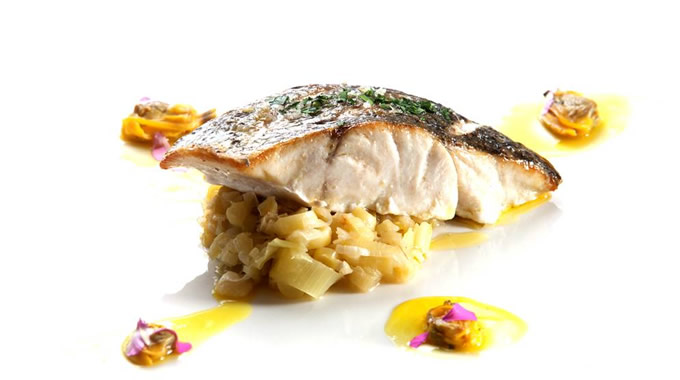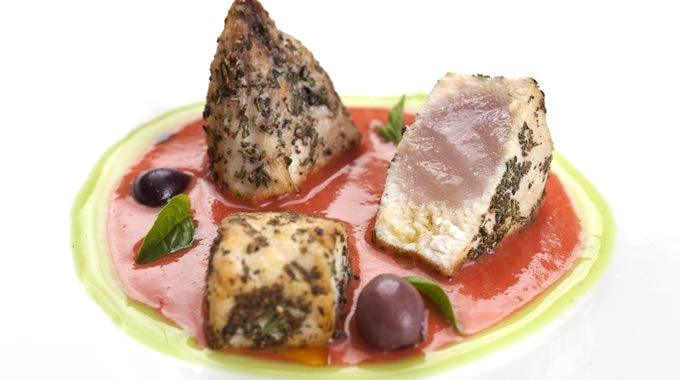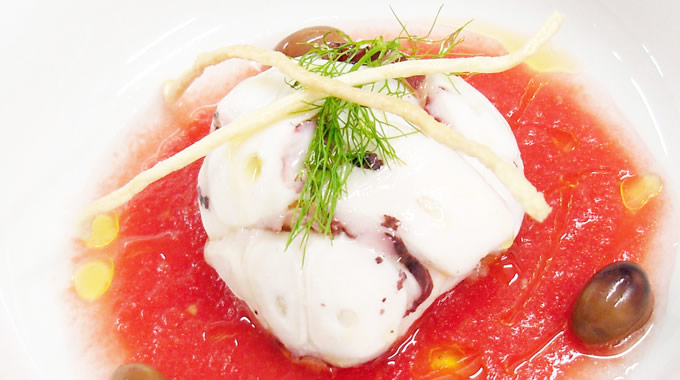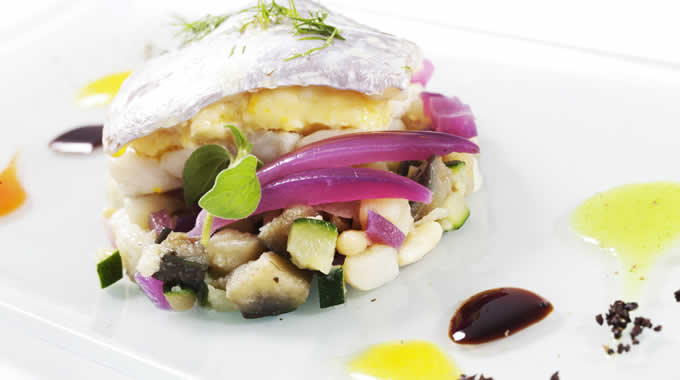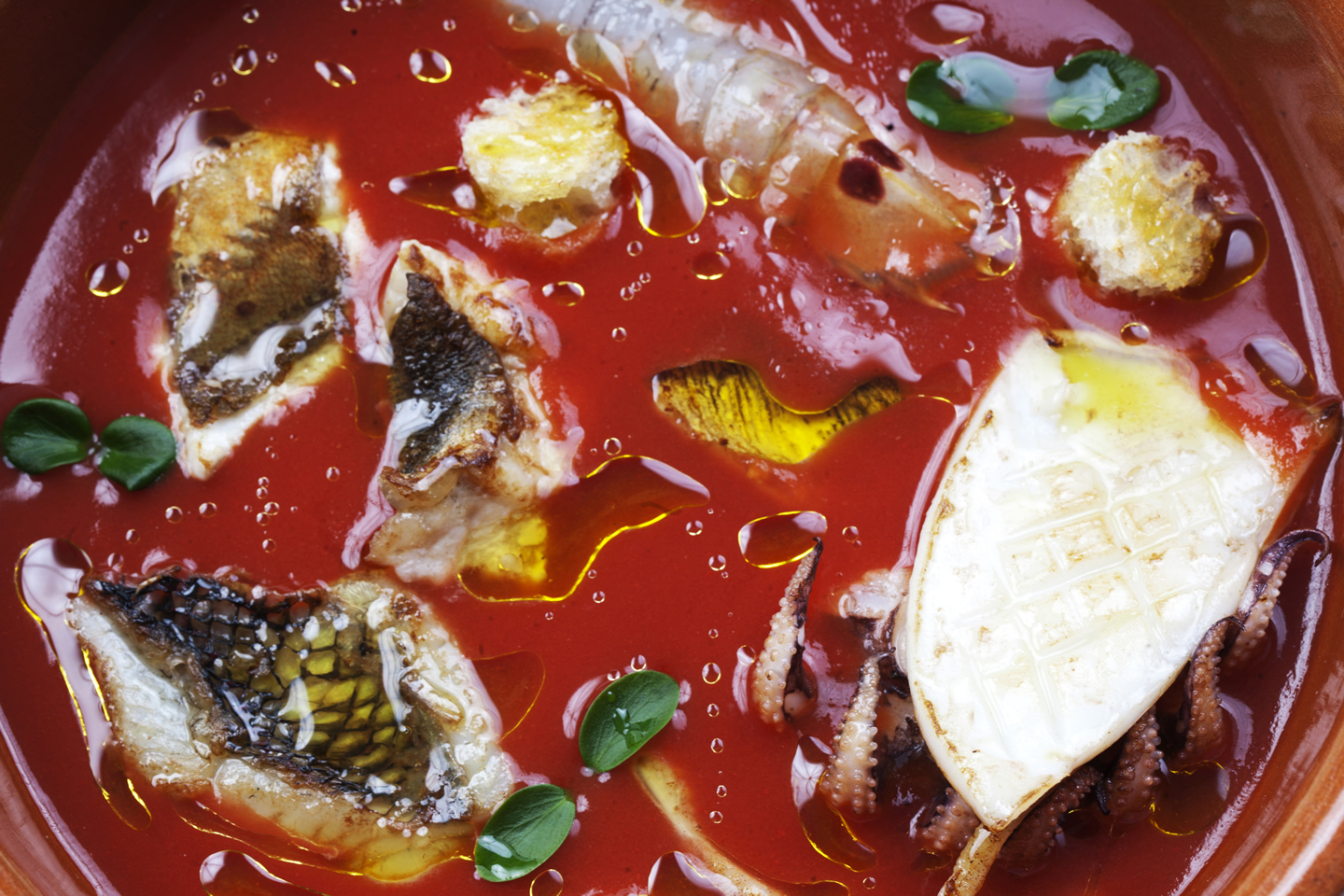Cooking on the Promontory of Monte Argentario has changed in recent times to accommodate a modern life style. The pace of work, technology and communications have affected fishing. In the past it was influenced by weather and the seasons – today, by the economy.
Kitchens were filled with the aroma of fish cooked tradionally in the pan with tomato sauce, low cost fish soups, seasonal vegetables with sconcigli, pitteri (seafood), prawns and squill, cuttlefish and potato soup, fish sauce with baby octopus, squid, shrimps and small scampi.
Traditionally dried on board, the "fiche maschie" (blue whiting) were cooked with tomato sauce or simply with oil and lemon. Rossetti were fried in croquettes while the less expensive fish, here called "pesce di terza", were fried and preserved with rosemary and vinegar. Anchovies, sculmi and small tuna were salted. Sardines, mackerel, mediterranean horse mackerel, caprignosi fish, mullet and zerretti were grilled.
At lunch time, in the old taverns called "frasche", boiled eggs were served with salted anchovies seasoned with garlic and parsley. Stockfish (previously hung on the wall, beaten with a wooden stick and soaked for two days with chickpeas) were cooked with onion, tomato, capers and anchovies or garlic, basil, black olives and tomato.
Both at home and in restaurants today fresh fish is served in lighter style dishes, seasoned with spices, citrus and flowers. The cooking times are shorter and the emphasis is on presentation.
While cooking has changed with the times, chefs can rely on genuinely fresh seaproducts, well known by local chefsfood.
Giancarlo Alocci, Slow Food Argentario Convivium Leader
Giancarlo Alocci, Slow Food Argentario Convivium Leader
